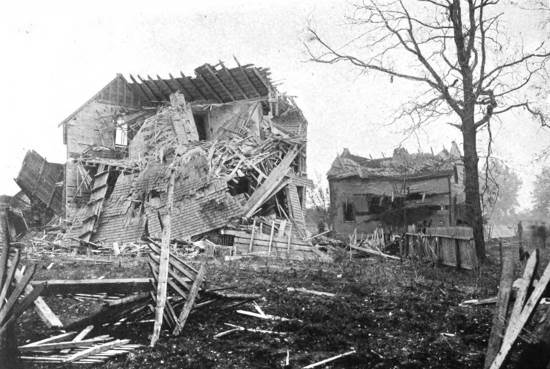
In the summer of 1903, the United States Cartridge Company of Tewksbury, Mass., noticed a stain on the floor of its gunpowder magazine. Apparently the dynamite magazine next door had been leaking nitroglycerine. The company asked the dynamite’s owner, American Powder Mills, to attend to the matter, and on July 29 Cartridge’s powder was loaded onto three wagons and moved a few hundred feet away, and an unlucky foreman named Goodwin entered the building, poured a solution on the stain, and began to sweep it with a broom. The spot began to smoke.
The ensuing blast killed 20 people and flattened a score of houses. “Buildings were shaken and windows broken in hundreds of places within a radius of fifteen miles,” reported New England Magazine. “People as far away as Dedham on the south and the mid-New Hampshire towns on the north, felt the shock and guessed at reckless blasts or earthquakes.”
It appears that the fire had caused the dynamite magazine to explode, which set off the three wagons of gunpowder, which set off a third magazine, leased by the Dupont Powder Company. “The ruin caused by the accident was appalling in its perfection,” notes the report. “Three acres of ground were entirely laid waste, the trees and bushes in a considerable radius being torn and blasted as by a breath from a huge furnace.”
The magazines had been built 30 years earlier, when the area had been remote, and the town had grown up around them. “The only safe assumption is that sooner or later every magazine is bound to explode, and must therefore be kept a safe distance from dwelling houses and other buildings.”
(Thanks, Meredith.)
